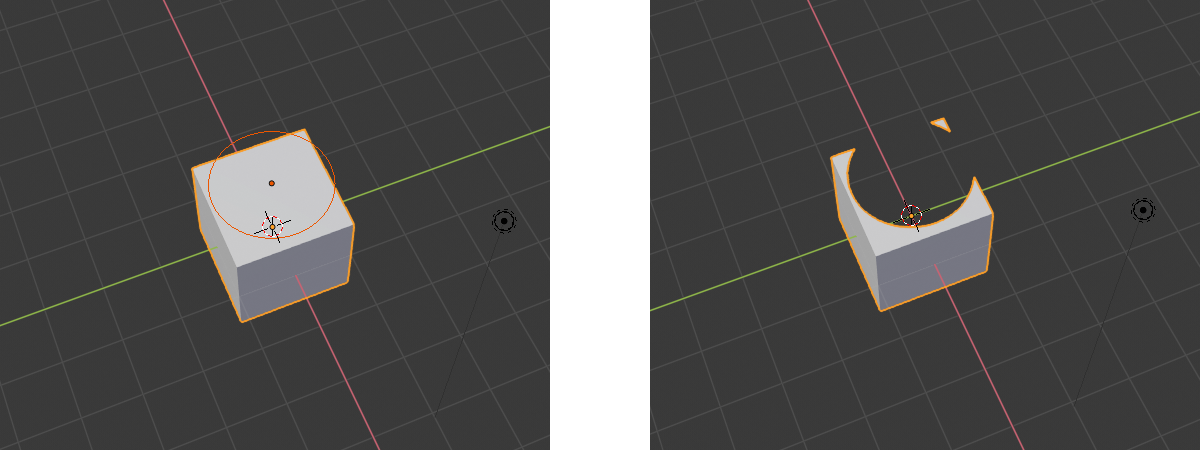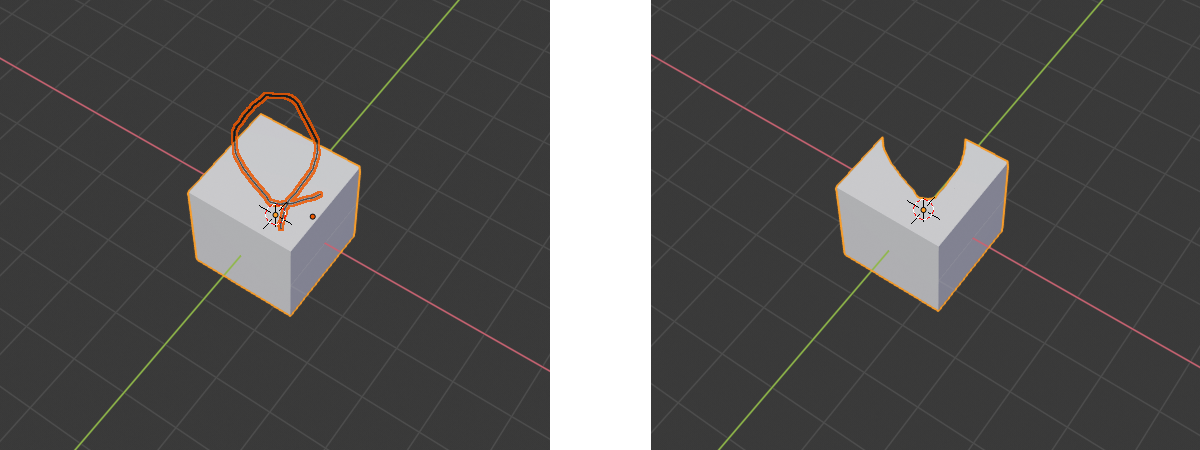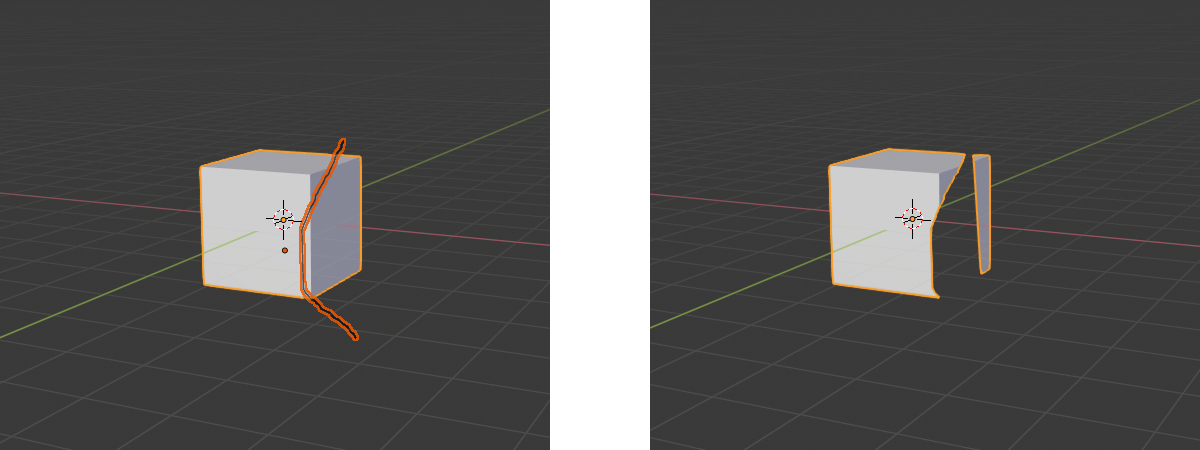Using the View Carve Addon¶
Basic Information¶
Once installed, the View Carve addon adds a new operator called “Viewport Stencil Carve” to Blender. The operator can be accessed from the Object menu in the 3D viewport. To use the operator, you must select all the objects you want to use as stencils, along with the target mesh object to be cut. The target mesh should be the last object selected, i.e. the active object. The following types of objects can be used as stencils:
- Grease Pencil objects
- Curves
- Meshes
- Surfaces
- Text objects
The following before-and-after screenshots show the result of using some Grease Pencil strokes and meshes as stencils to cut a cube:

Operator Options¶
The following properties can be set in the operator properties panel after applying the Viewport Stencil Carve operator:
- Pieces to Keep. This property determines which pieces resulting from the cut will be kept or discarded. The default value of All will cause the target mesh to be cut into pieces, with all pieces kept as separate objects. With the other two possible values, only one piece will be kept. If the property is set to Difference, only the piece that lies outside all the stencils will be kept. If the property is set to Intersection, only the piece that lies inside all the stencils will be kept. (In the case of Intersection, if the stencils don’t all overlap, there will be no piece to keep, and the target mesh will simply be deleted.)
- Union Carves. When enabled, this property causes all the stencils to be treated as if they were a single stencil object, obtained by taking the Boolean union of the stencils. This property is only relevant if there are multiple stencil objects. When this property is enabled, the cut will result in at most two pieces.
- Delete Carver Objects. When enabled, this property causes the stencil objects to be deleted after they have been used to cut the target mesh. This can be convenient if you created the stencil objects for the sole purpose of acting as stencils.
- Overlap Threshold. This property controls the Overlap Threshold parameter for the Boolean operations that the Viewport Stencil Carve operator uses internally. It can usually be left at its default value.
- Stencil Grow Ratio. To reduce the chance of generating bad geometry, View Carve uses a slightly larger stencil area than that defined by the stencil objects. This property controls how much larger the stencil area will be. It can usually be left at its default value, but you may want to try increasing it if bad geometry is being generated, or decreasing it if the cut is not accurate enough. (Larger values make bad geometry less likely to occur but also reduce the accuracy of the cut.) Setting this property to zero is not recommended, as it makes the generation of bad geometry quite likely.
Notes on Stroke and Curve Behavior¶
When using Grease Pencil or Curve objects as stencils, there are a few things to consider:
- The thickness and filling of Grease Pencil strokes are not taken into account. In other words, Grease Pencil strokes are treated like infinitely thin curves.
- If the curve is closed or intersects itself (or appears to do so in the viewport’s projection), the region enclosed by the curve is used as the stencil, as in the following screenshots.


- If the curve is not closed and does not intersect itself, the curve will be auto-closed, i.e. treated as if its first and last points were joined by a straight line, as in the following screenshots.

Caveats¶
When using the Viewport Stencil Carve operator, any unapplied modifiers on mesh objects (including the target mesh or stencil meshes) or grease pencil objects will essentially be ignored. The cut applies to the target mesh’s base geometry, not to its geometry after modifiers. This can lead to surprising behavior if a target or stencil object has unapplied modifiers. Note, however, that unapplied modifiers on stencil objects other than meshes and grease pencil objects (e.g. curves, surfaces, text) are not ignored.